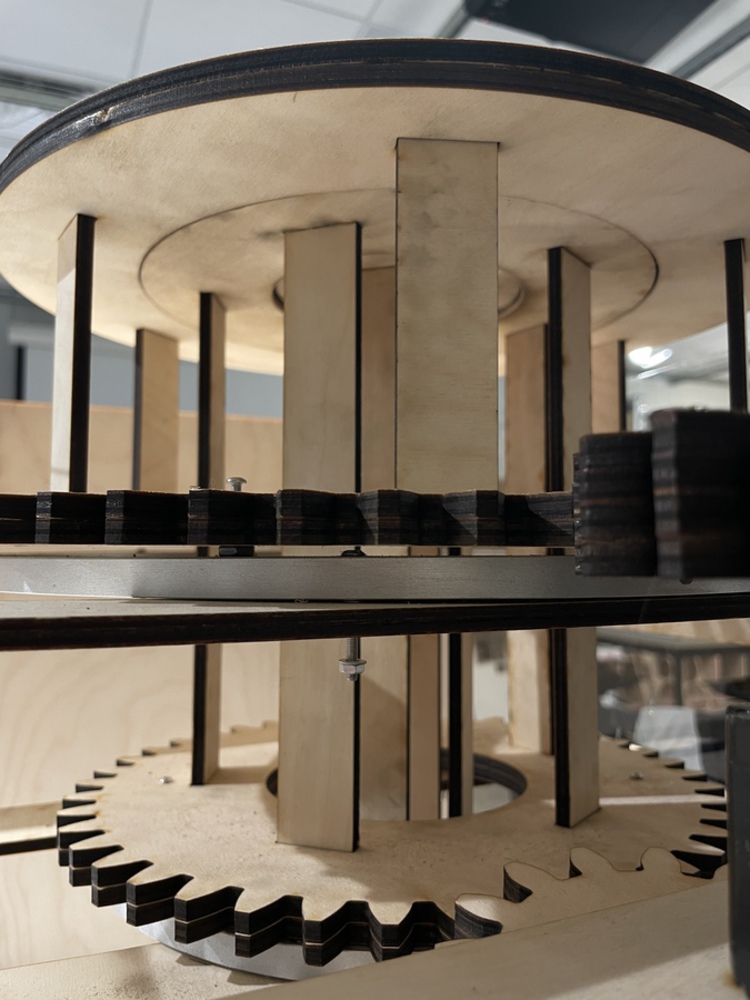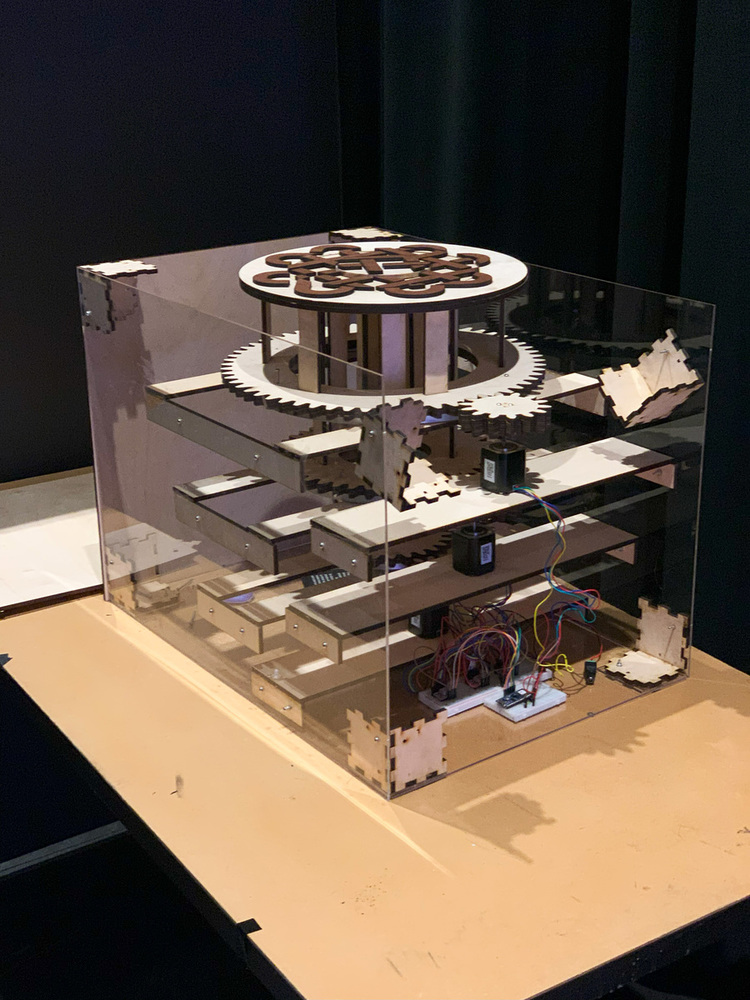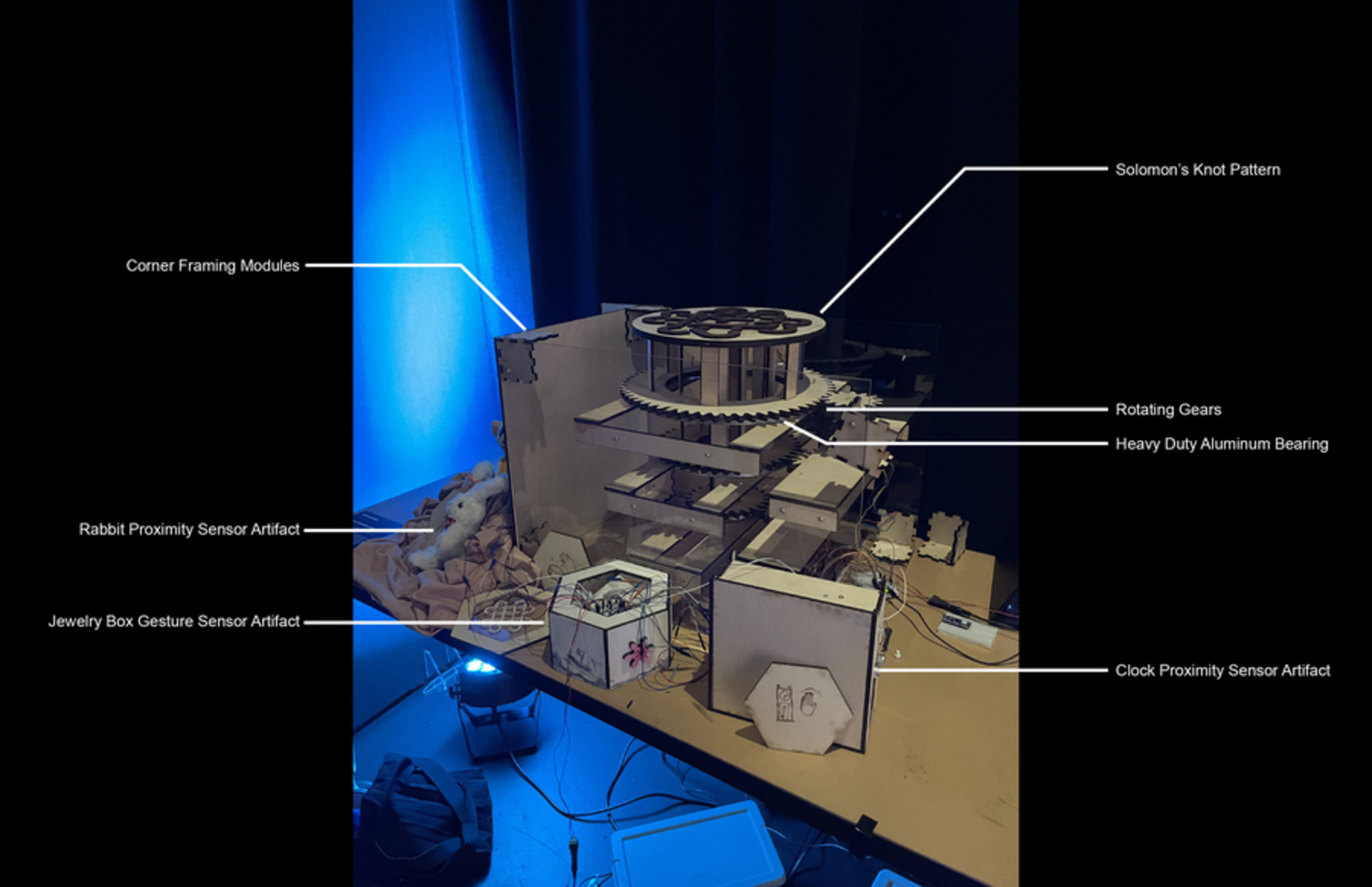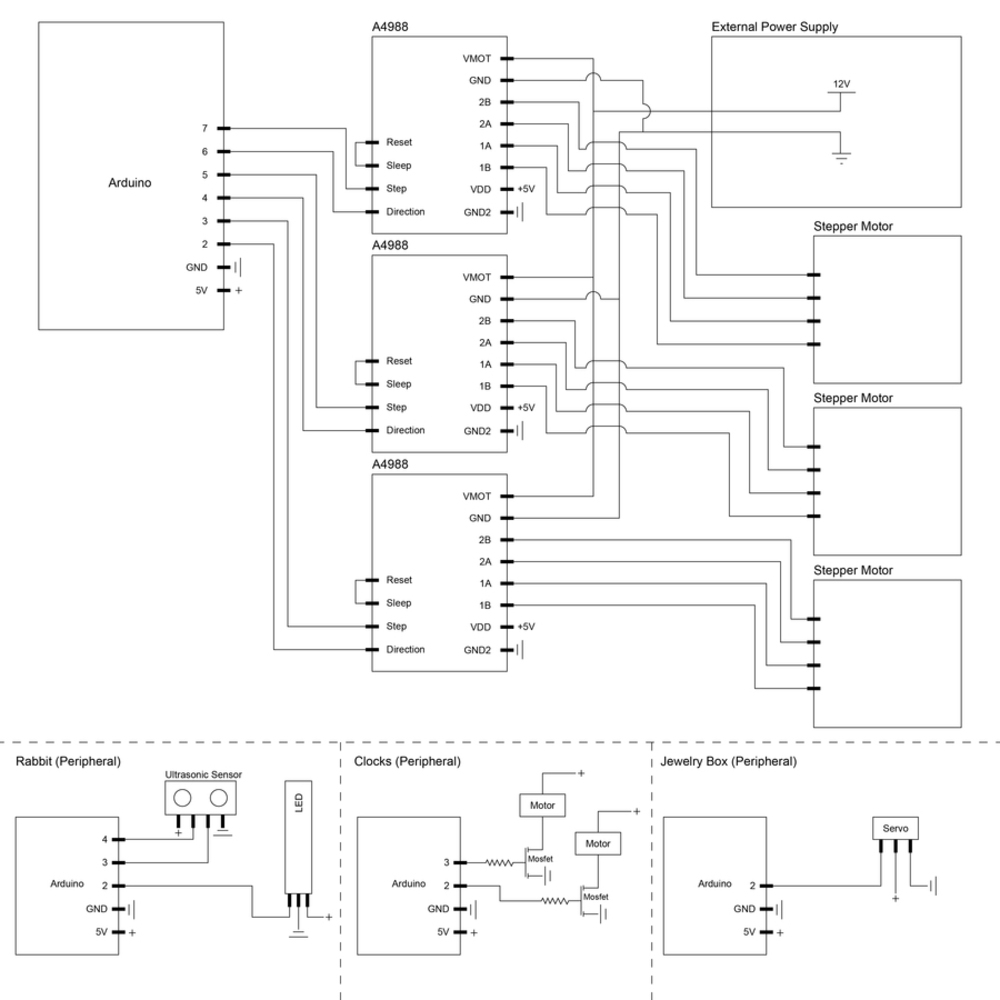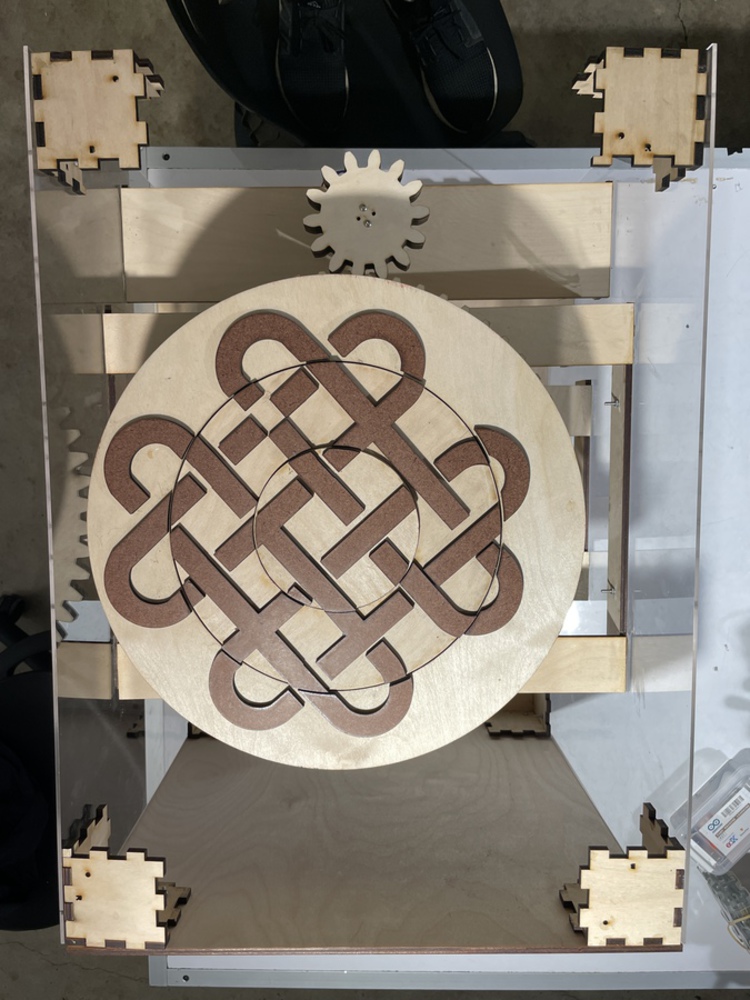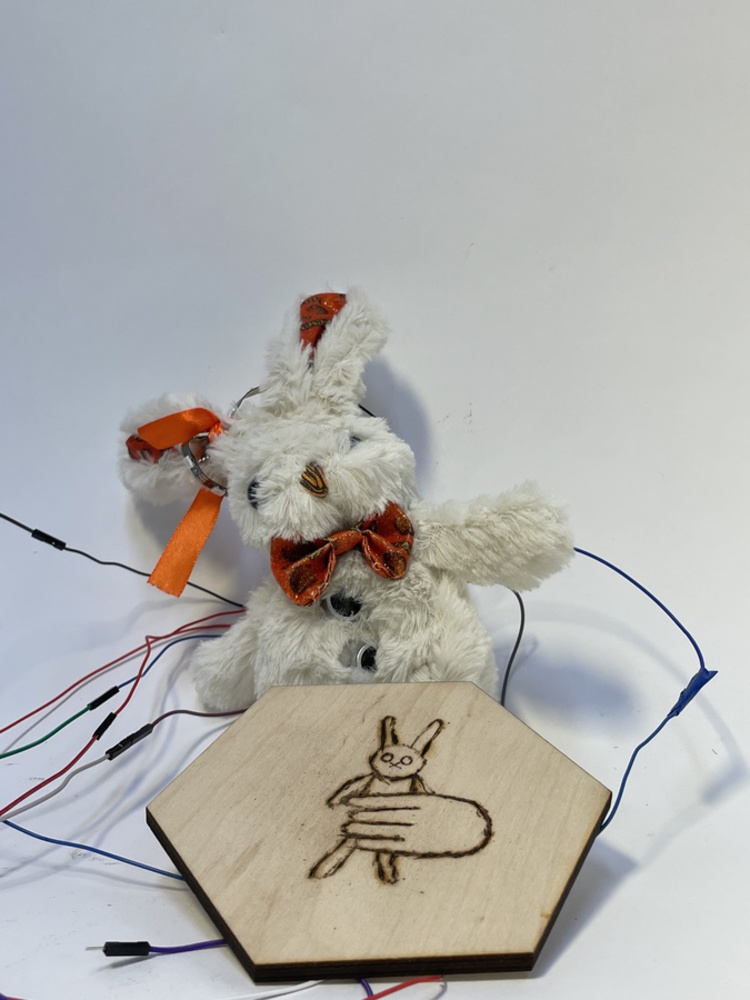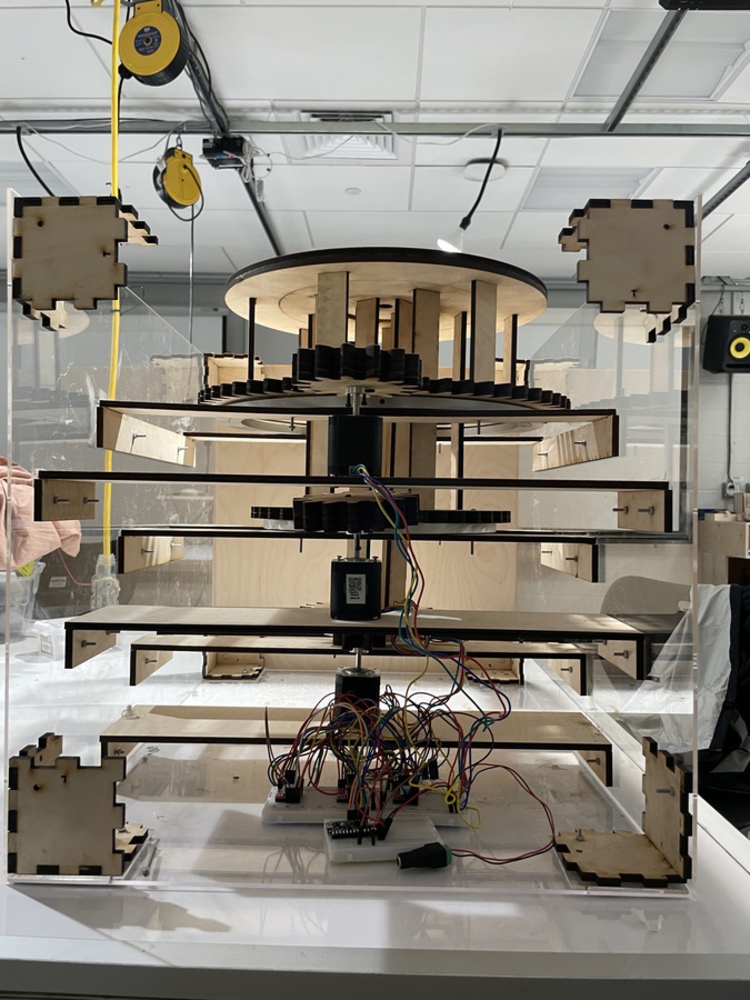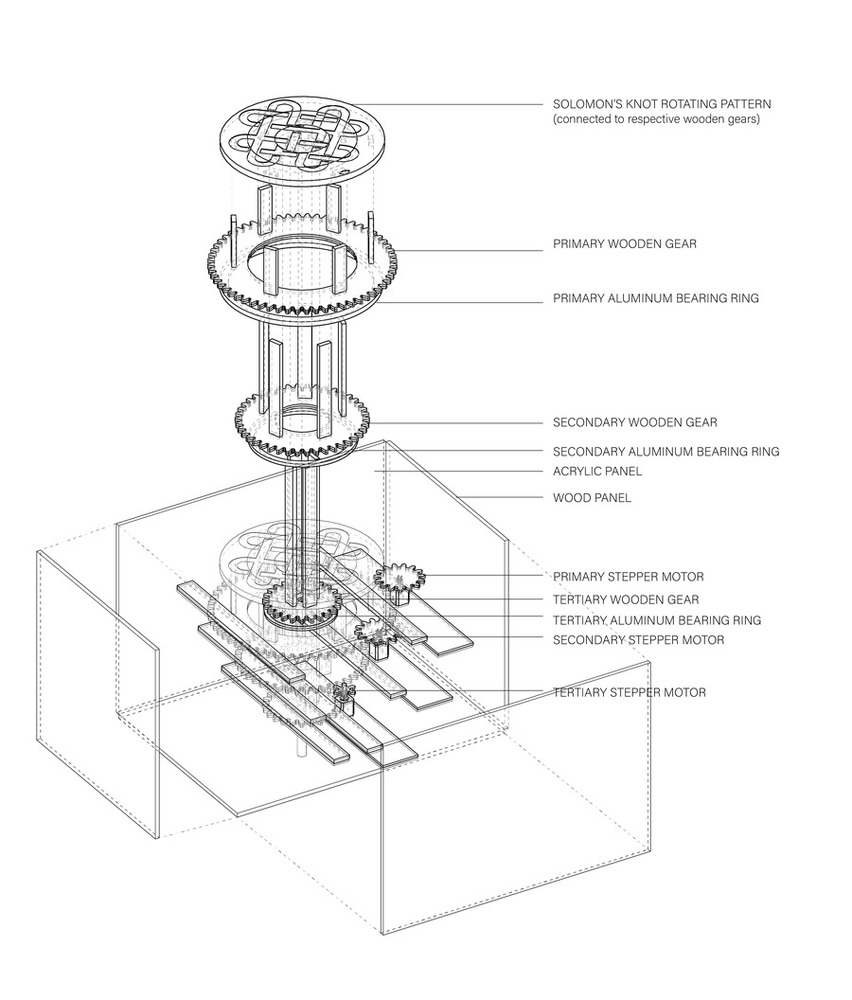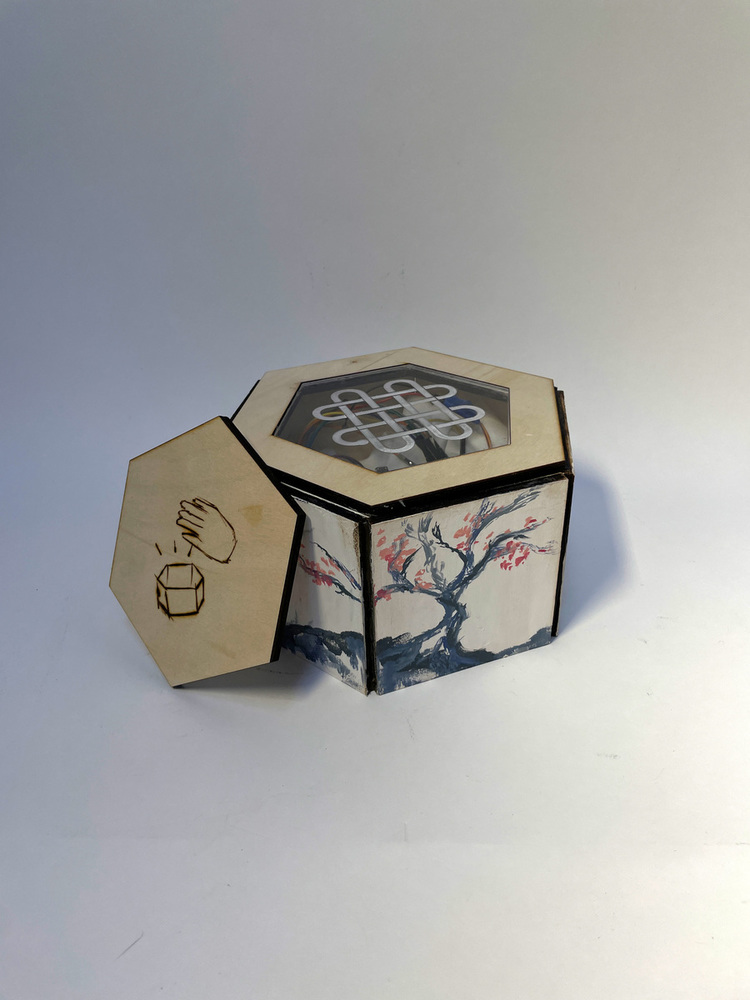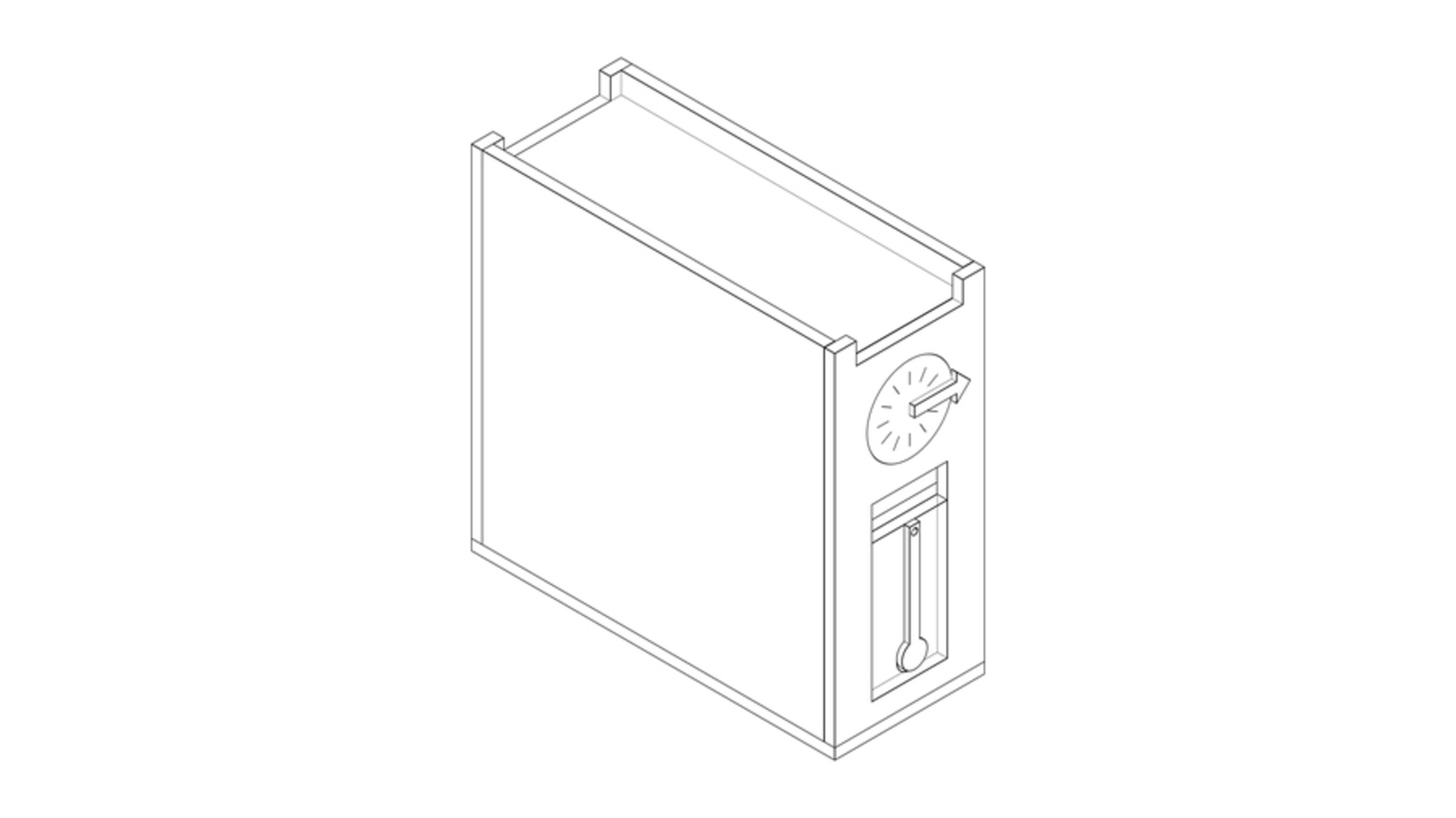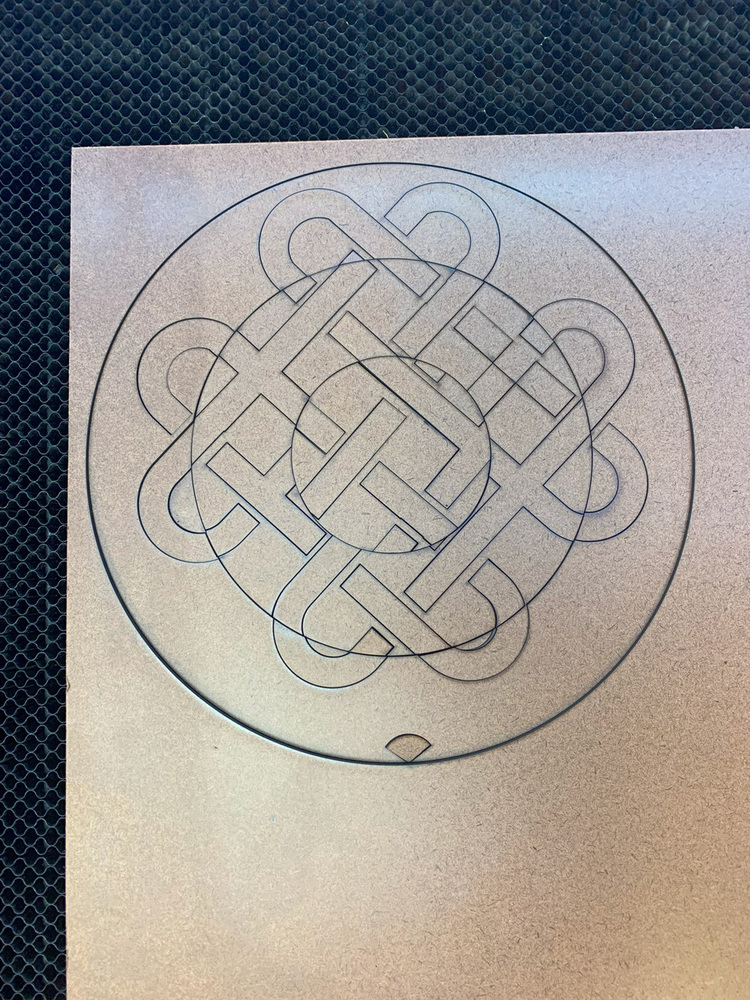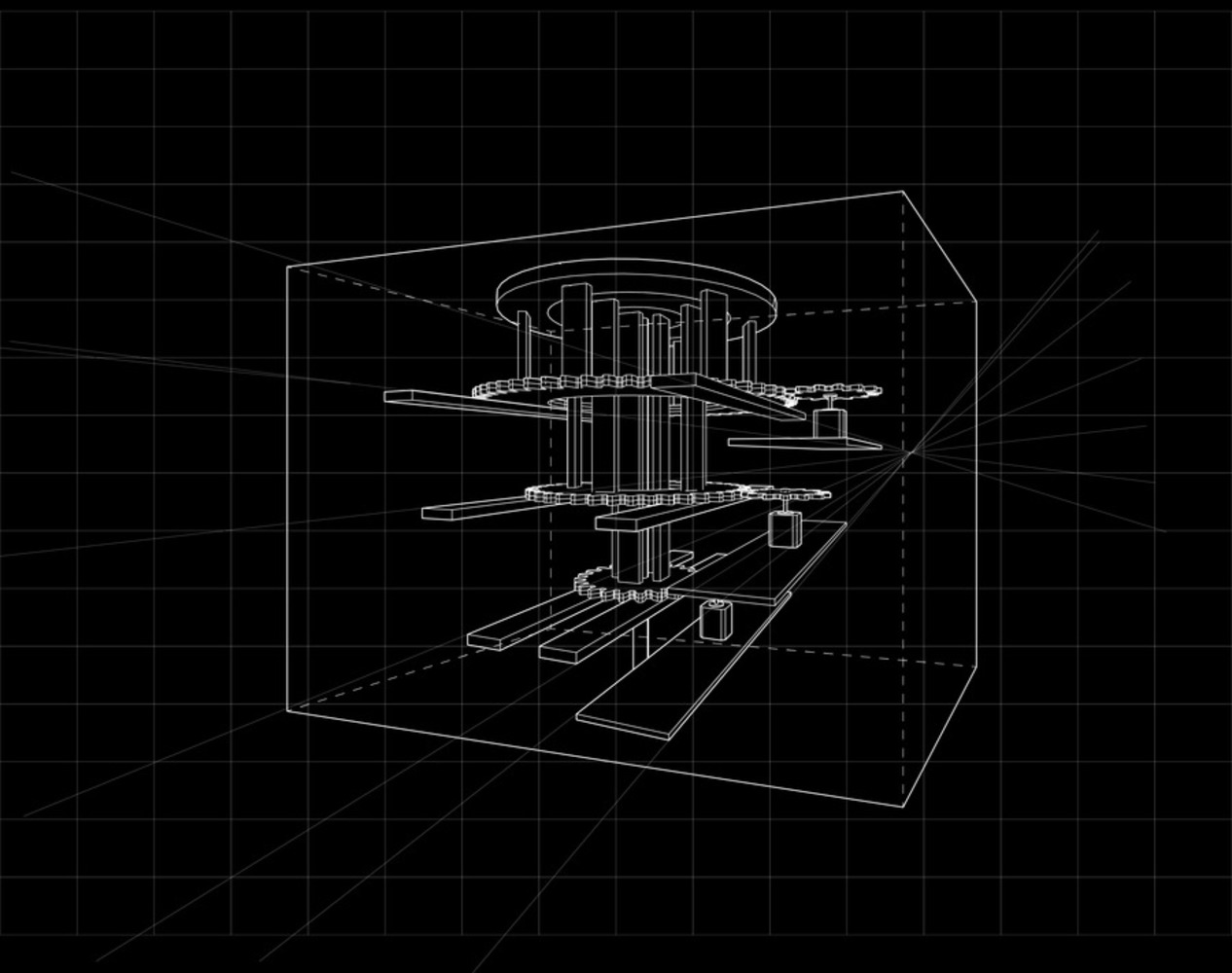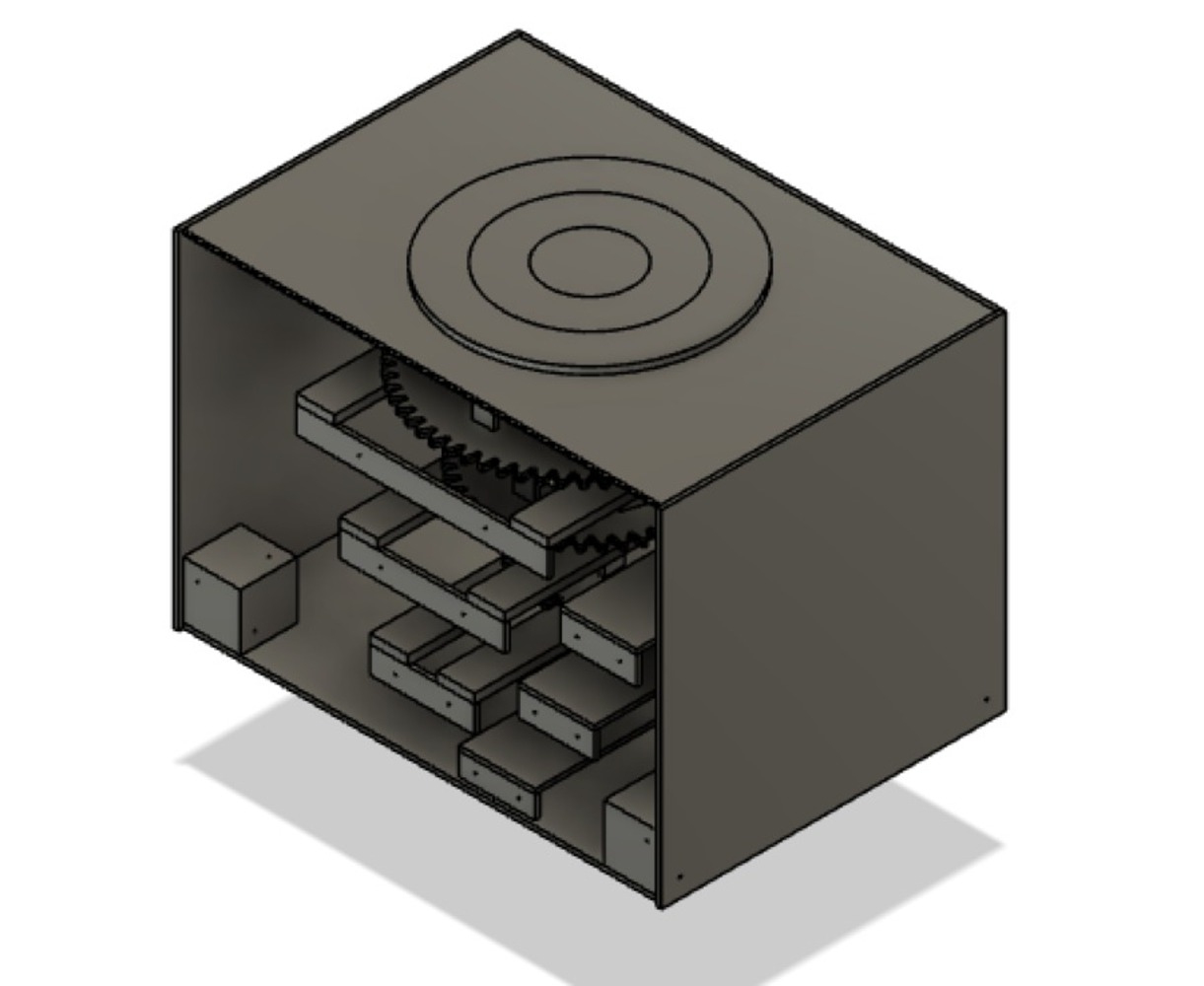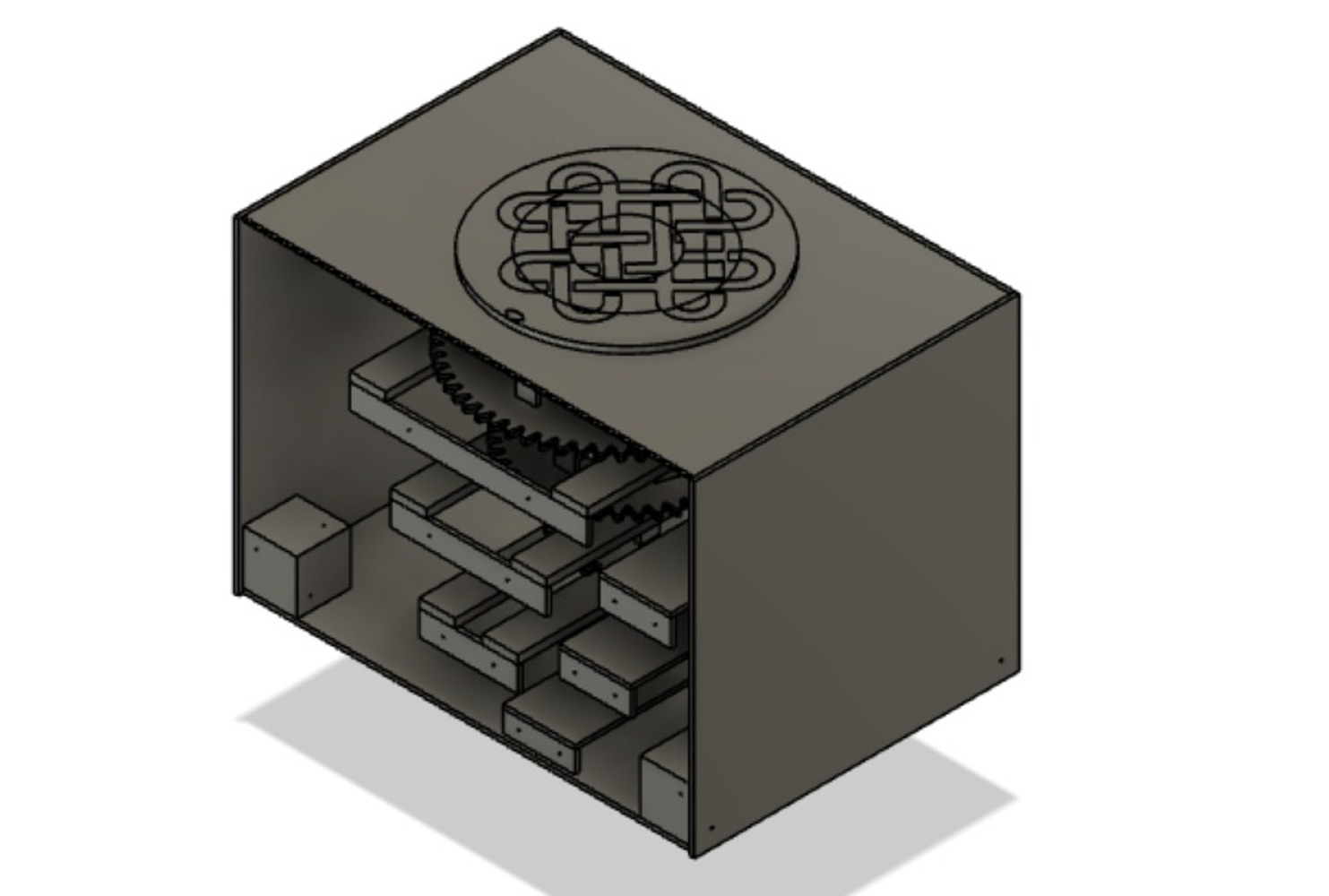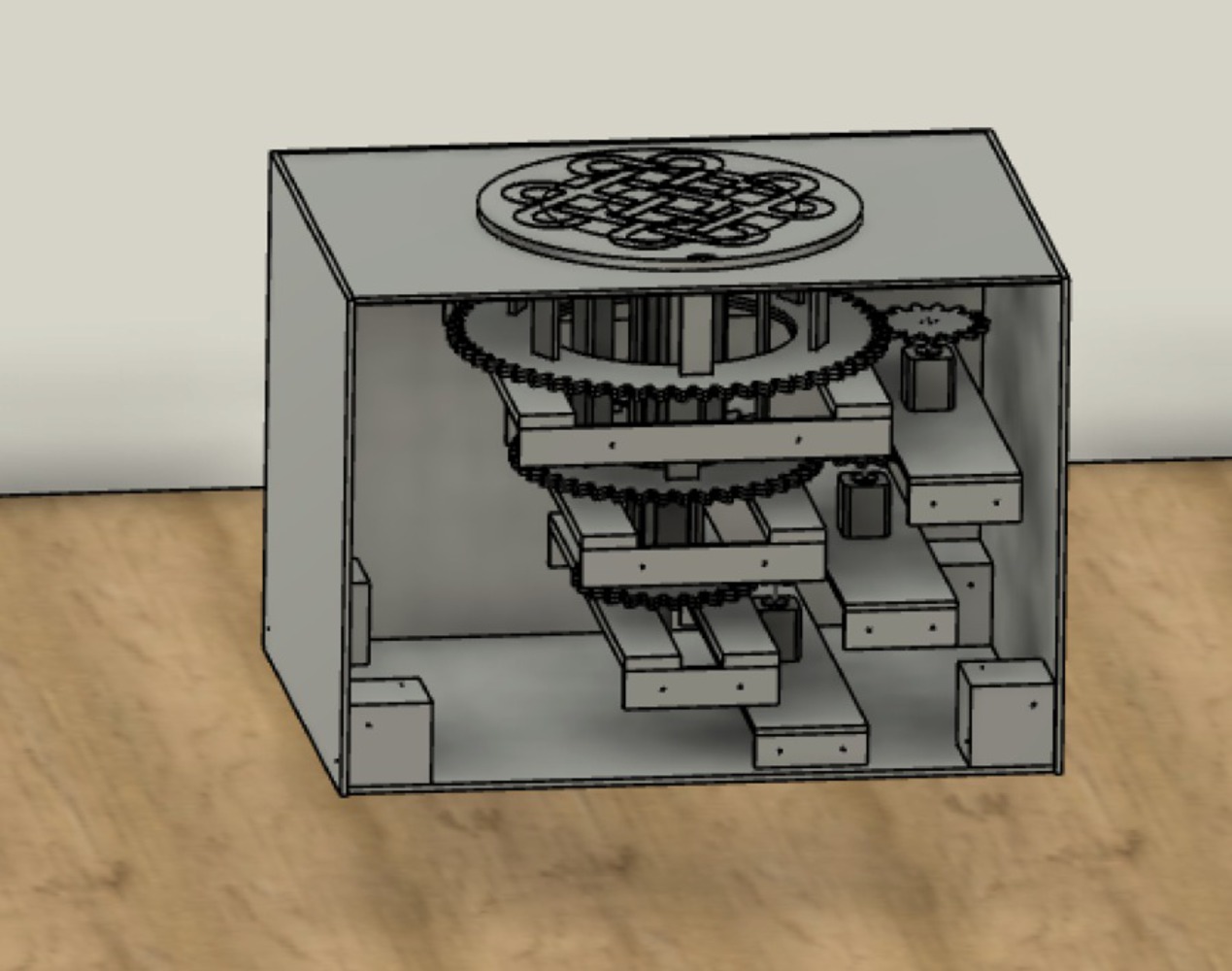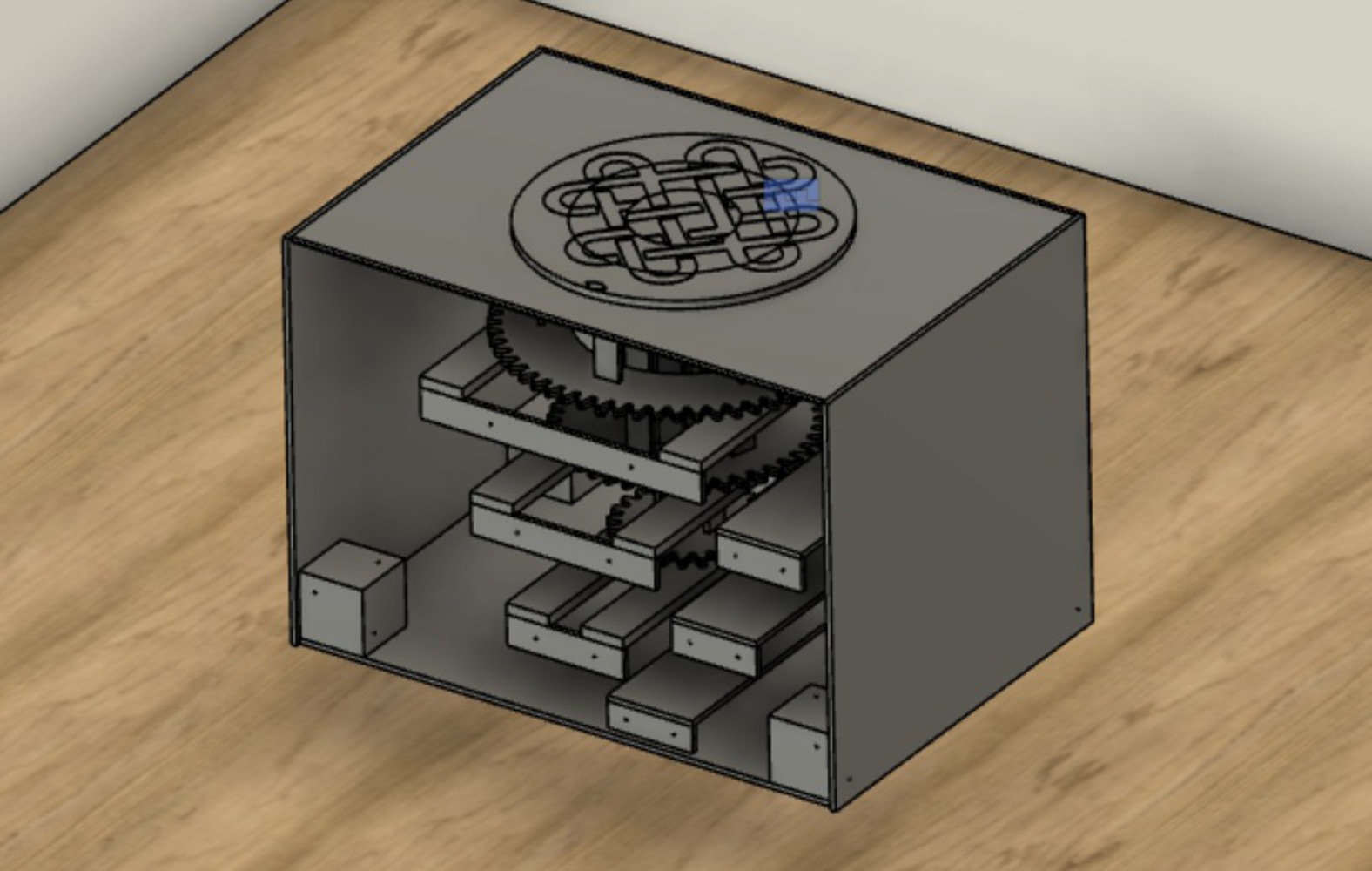Creative Documentation
Process
The theme we wanted to explore was the feeling of interconnectedness. Something that is spooky about technology today is its power to enable human interactions that occur through invisible means. For example, remote control allows people to control machines across space by means of invisible signals, Bluetooth allows devices to “talk” with each other without any sort of physical connection, and the internet enables people to share information and experiences across the world while remaining in singular locations. We took inspiration from all these sorts of interactions because they enable things to affect other things through indirect, mysterious, seemingly other-worldly means rather than through direct contact.
For inspiration regarding the physical medium through which we would decide to explore the previously mentioned themes, we looked at mechanical puzzles, escape rooms, kinetic art, and other mechanical systems. We believed that the idea of interconnectedness would better be experienced if people could interact with something and see and feel how it would respond to them. Specifically, we took inspiration from a $30,000 puzzle box designed by Labsterium and various mechanical puzzles designed by local shops.
Our exploration resulted in an interactive installation that immerses people into an interconnected space. Solomon’s Box was an innovative creation that combined electronics, mechanical systems, and Bluetooth technology to create an engaging experience for users.
The box itself is made mainly from laser cut parts. It has several wood components including its gears, shelves, walls, designs, and connectors, as well as acrylic components. Most of those parts are fastened with either M3 hardware or industrial glue. The box contains 3 stepper motors along with 3 gear trains. The stepper motors have a driving gear connected to their shafts via gear couplers. Those driving gears turn their adjacent gears which then turn the patterns that they are connected to.
For the electronics, we used 4 Arduino Nano 33 BLE Sense devices that communicated with each other via Bluetooth. One Arduino controlled the rabbit and caused its LEDs to light up every time its proximity sensor was triggered. Another Arduino controlled the twin clocks which would spin if their proximity sensors were triggered. The third Arduino was placed inside the jewelry box and would send signals whenever someone placed their hand inside of the box. The last Arduino was the central one; it took in the signals from the 3 peripheral Arduinos and used their data to control the state of the puzzle box.
Although we ran into technical difficulties during the exhibition, our overall design was captivating. Ideally, it would be refined to utilize Bluetooth across different spaces so that people would interact with objects in front of them, but then hear sounds from across the room. In general, our project has the potential to be further explored to create more interactive, engaging aspects that unearth the theme of interconnectedness further.
A big challenge that we ran into toward the start was developing the concept we wanted to explore. We knew that we wanted to investigate a topic involving human interaction and the unintended consequences that can result from them, but it was difficult to think of the sorts of interactions we wanted people to have. We decided to create a puzzle because it would create a sense of mystery that makes people ask, “what happens when I solve this?” This would serve as a good framework to work around since we could use it to frustrate people’s expectations. The idea would be that when one person interacts with a thing, it might get them closer to a solution, but when another person interacts with another thing, it would hinder the process that the former person had just made. People would eventually realize that the actions of other people were also affecting the thing that was directly in front of them.
The next phase of the process focused on designing the puzzle box. For that, we took inspiration from mechanical puzzles and escape rooms. We decided that we wanted the scale of the puzzle box to be large so that it would create a more engaging experience.
Once the design was completed, we completed the next stages of our project in parallel: one person on electronics and two on fabrication.
One problem we ran into was that our device couldn’t operate due to factors that weren’t considered in the first design. Our gears weren’t spinning because of the friction between each wooden piece. After we realized this issue, we redesigned the part to incorporate ball bearings that would allow for much smoother motion. The use of bearings enabled our gears to spin properly but required us to alter several other parts of the box to properly incorporate them. In the end though, they greatly increased the functionality of our artifact.
Another huge issue we ran into was using BLE (Bluetooth® Low Energy). We originally intended to use the HC-SR05 Bluetooth modules since they are simple, reliable, and very user friendly, but the Physical Computing Lab didn’t carry them in stock and we weren’t able to acquire them in a reasonable amount of time. Because of this, we attempted to use the built-in Bluetooth modules that the Arduinos use, but since they are relatively new and complex, we struggled to find any decent documentation on how to incorporate them. We experienced a lot of inconsistencies and bugs when trying to use the built-in BLE modules, so we switched to serial communication.
Overall, we are happy with our final product. We learned a good deal about design for manufacturing, integrating electronics with mechanical systems, and programming with communication in mind. In the future, we’d love to further explore ways we can create interactive environments utilizing these tools.
